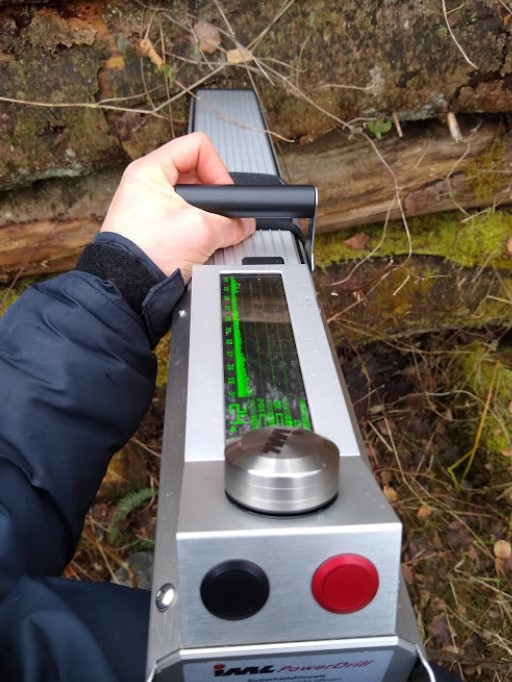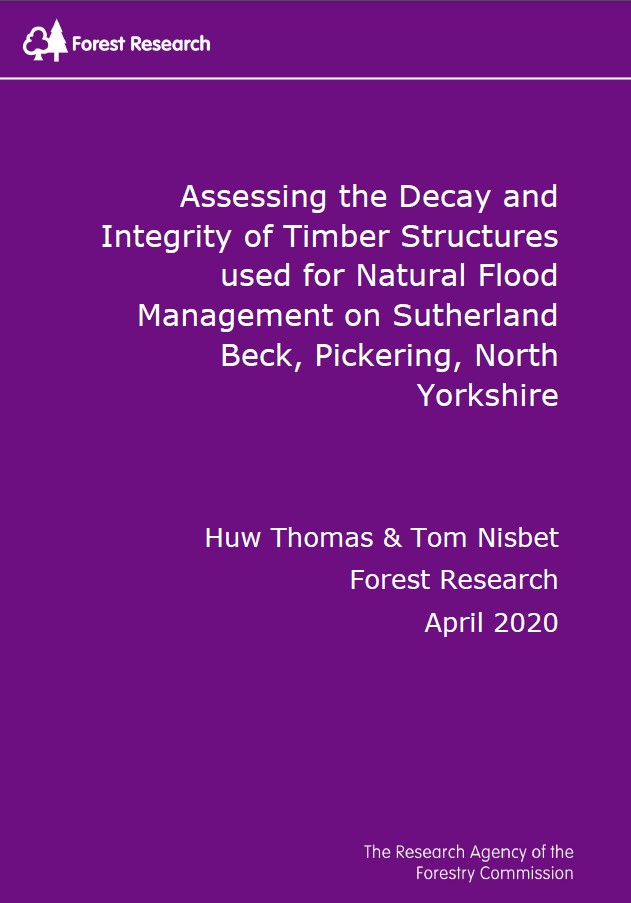Summary
Timber structures placed in watercourses and on their floodplains are effective NFM measures, restricting the flow and potentially holding large volumes of water during flood events, helping to reduce downstream flood risk. In an environment where constant wetting and drying occurs, timbers used for NFM measures have a high susceptibility to rot, and over time will degrade to a point of failure and collapse, potentially increasing the risk of damage to property and assets downstream.
Research Objectives
The use of timber structures in NFM is becoming increasingly popular, yet very little is known as to how quickly the timbers degrade and how this affects their lifespan and thus effectiveness.
The aim of this project was to carry out an assessment of the degree of decay in two timber flood storage bunds and three in-stream leaky woody dams (LWD) installed within or adjacent to the beaver reintroduction enclosure on Sutherland Beck, near Pickering North Yorkshire.
The timber flood storage bunds were constructed in August 2011 as part of the Defra funded, Slowing the Flow partnership project and thus are now eight and a half years old, whilst the three in-stream structures were constructed as part of the beaver reintroduction project and installed in 2019.
General Content

A ‘microdrill’ (IML Resi-PD microdrill) was used to survey and measure the extent of decay within the timber structures on Sutherland Beck. The microdrill technique is already extensively used on trees, utility poles (BT Openreach for example use the devices to test their wooden utility poles for timber degradation) and other wooden structures, including play equipment, lock gates, jetties and historic timbers.
This data help determine the lifespan of the timber bunds and inform the development of guidance on appropriate maintenance schedules for repair and/or replacement, thereby increasing confidence in the longterm integrity and safety of such structures as an NFM intervention.


